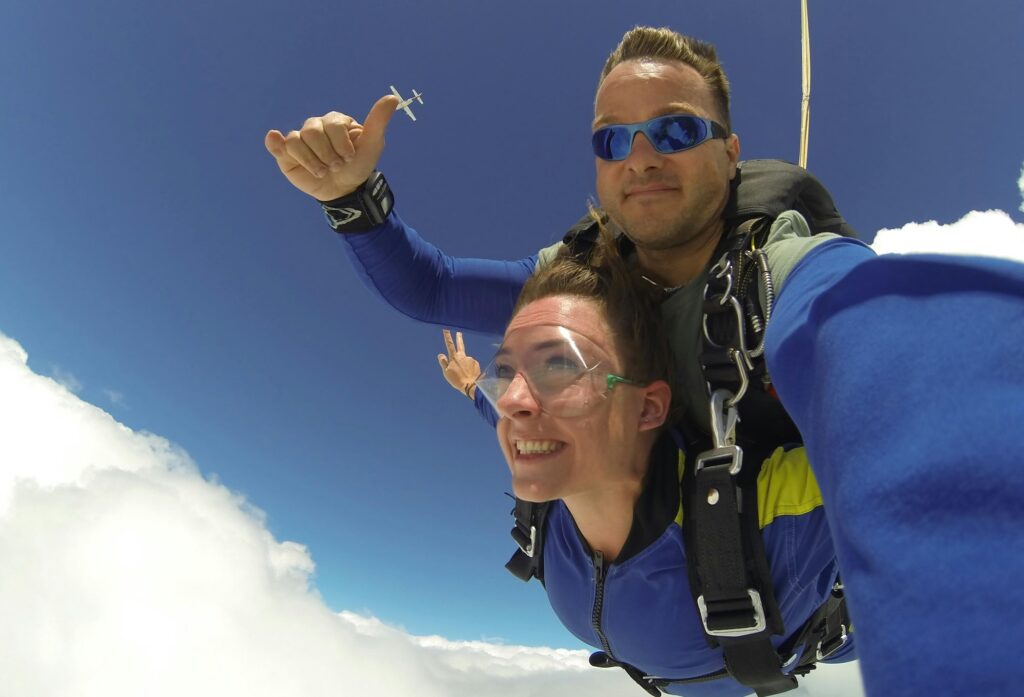Safety
9 Tips to Overcome Your Fear of Heights
Learn how to overcome fear of heights with tried and tested techniques.

If you close your eyes and imagine standing on the edge of a cliff, does your heart rate speed up as your hands get sweaty?
The answer’s probably yes. After all, it seems like a pretty rational reaction to a life-threatening situation.
But for some people, this fear of heights can become irrational and inhibit them from fully experiencing life.
If you’re one of those people, don’t worry – you’re not alone.
Understanding Fear of Heights
Fear of heights is also commonly known as acrophobia. But not everyone with a fear of heights actually has acrophobia.
An estimated 28% of people suffer from some form of fear of heights. That’s a lot of people who get wobbly knees when they step onto a balcony!
But within this group, there’s a whole spectrum of fear.
While some people might get sweaty palms and feel a bit nervous when thinking about being high off the ground, for others this exercise is enough to induce a full-blown panic attack.
When people find themselves at the severe end of the scale, their fear of heights can be classed as acrophobia.

What Causes a Fear of Heights?
Fear of heights can come from a mix of factors, including genetics, our surroundings, and psychological influences.
A big contributor is often early traumatic experiences related to heights, like a fall or a close call, which can lead to a lasting fear. Plus, behaviors we pick up as kids matter; if we see a parent or caregiver being scared of heights, we might start feeling the same way.
Genetics also play a role—people with a family history of anxiety disorders might be more prone to develop phobias like acrophobia.
Lastly, certain personality traits, like being more sensitive to anxiety or not liking risks, can make the fear of heights even stronger.
Understanding these causes is a great first step in tackling the fear and figuring out how to manage it.
Practical Tips to Overcome Your Fear of Heights
If you’re ready to take control of your fear of heights, here are some steps that can help you gradually overcome it:
1. Recognizing Your Triggers
The first step in overcoming your fear is identifying what specifically triggers it. Is it looking down from a balcony? Standing near a window in a tall building? Or perhaps it’s the sensation of an elevator moving upwards?
Knowing your triggers helps you understand and address them more effectively.
2. Avoid Creating a Fear of the Fear Itself
A lot of people suffer from a fear of heights but the reality is that it’s easy to make it worse by developing a fear of fear. The feeling of a panic attack is probably one of the worst things in the world, so it’s not uncommon to feel panicked at the thought of doing something because we imagine how it might make us feel. It’s important to separate the two.
Picture jumping off a rock into the sea. Many people will stand at the top of the rock for 10 minutes with their heart pumping out of their chest and their knees shaking like jelly. This is a fear of the fear.
The jump itself – and therefore the actual fear – would have lasted less than 2 seconds.
3. Understanding the Danger
A lack of understanding of the real danger of a situation can lead to irrational fears. If you want to try rock climbing, learn about the safety of rock climbing equipment. If you’re planning on doing a skydive, learn about the safety statistics of skydiving.
You’ll probably be surprised when you find out the reality of the situation.
4. Gradual Exposure Therapy
One effective method to overcome a fear of heights is gradual exposure therapy. Begin with low-level exposures to heights, such as looking at pictures of tall buildings or standing on a low balcony. The goal is to get comfortable with small steps before progressing to more challenging scenarios.
As you go through this process, you should aim to get rid of the fear, but rather get comfortable with the feeling of fear.
Gradual exposure is a great technique but if we stop feeling fear because we become comfortable with one specific situation then we won’t necessarily know how to deal with the fear when it arises in a new, unforeseen situation.
5. Reframe Negative Thoughts
Cognitive Behavioral Therapy (CBT) is highly effective in treating acrophobia. One key aspect is learning to reframe negative thoughts. Instead of thinking, “I’m going to fall,” replace that thought with something more realistic like, “This balcony is sturdy and safe.” This technique can help reduce the intensity of fear and prevent irrational thoughts from taking over.
6. Relaxation Techniques
Relaxation techniques can significantly reduce your anxiety levels when facing heights. Breathing exercises, mindfulness, and progressive muscle relaxation are all effective methods. Practice these techniques while visualizing scenarios that provoke your fear response.
Which leads me perfectly onto…
7. Visualization
Use your imagination to your advantage. Visualize yourself in situations that would normally provoke a fear response and practice staying calm.
Visualization is basically like practicing. It’s a chance to train and rehearse the experience before it actually happens.
Just as you might feel less nervous about doing a presentation in front of the team at work if you’ve had time to prepare and rehearse it, you’ll probably feel less nervous about skydiving if you take the time to visualize it before hand.
8. Use Distraction
Sometimes, distraction is the best remedy. Engage in conversation, listen to music, or focus on a task to divert your attention from your fear.
This can help reduce anxiety and make the experience more manageable.
Personally, I find singing (badly might I add) just takes the edge off of an otherwise fear-inducing situation.
9. Set Achievable Goals
Setting small, realistic goals is essential for progress. Start with minor challenges and gradually work your way up. Celebrate each accomplishment, no matter how small, to maintain motivation and build confidence.
Medical Support for Fear of Heights
If you feel like your fear of heights is severely impacting your quality of life then it might be time to seek professional help. Start by speaking with your doctor since they will be able to explain the various treatment options available.
Treatments for fear of heights might include:
- Cognitive-Behavioral Therapy (CBT): This therapy helps individuals change negative thought patterns related to heights and develop coping strategies.
- Exposure Therapy: Slow and controlled exposure to heights can also help to desensitize those fears, increasingly becoming confident over higher grounds.
- Medication: Antidepressants or anti-anxiety medications may be prescribed to help manage symptoms if they’re severe.
- Relaxation Techniques: Practices such as deep breathing, mindfulness, or meditation can help reduce anxiety when confronted with fear-inducing situations.
- Support Groups: Connecting with others who experience similar fears can provide encouragement and shared coping strategies.
- Virtual Reality Therapy: This innovative approach allows individuals to confront their fear of heights in a safe and controlled virtual environment.
- Self-Help Strategies: Reading books, using apps designed for phobias, or engaging in gradual self-exposure exercises can foster self-management skills.
Overcoming a fear of heights may not happen overnight, but with determination and the right strategies, it is entirely achievable!
Published: August 21, 2024 | Last Updated: August 21, 2024
Don’t miss an update!
Join our mailing list for the latest indoor skydiving updates delivered directly to your inbox.

